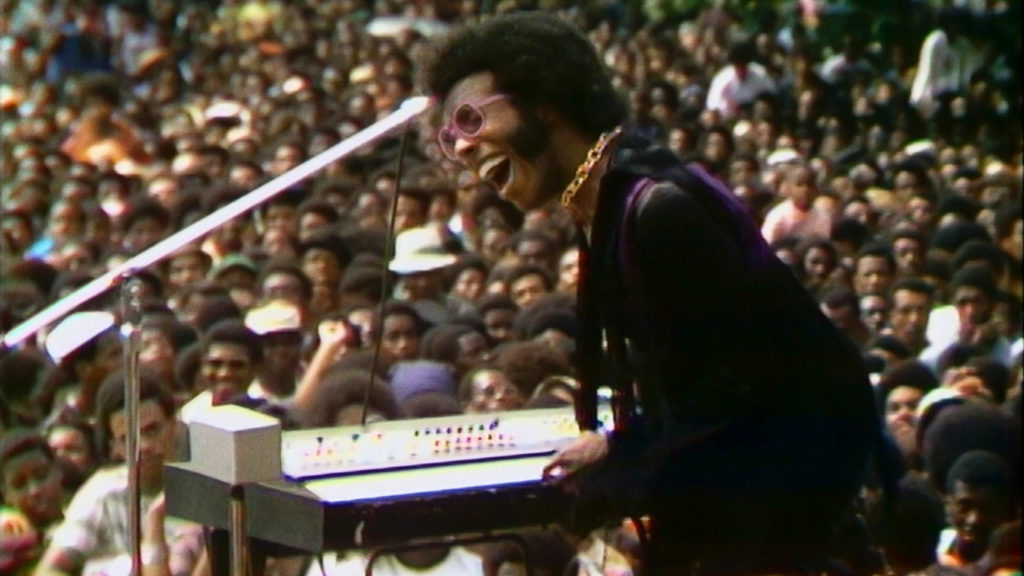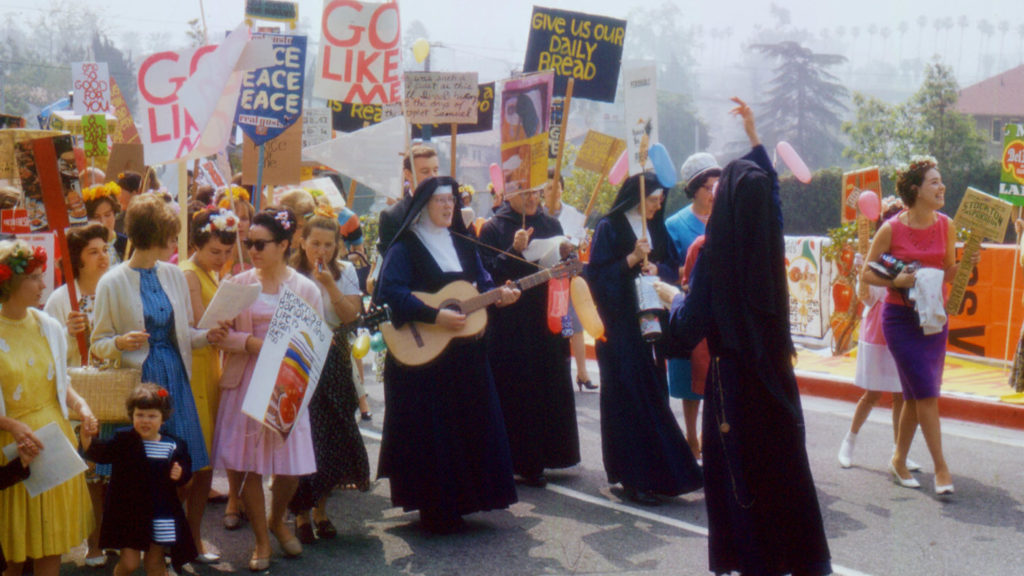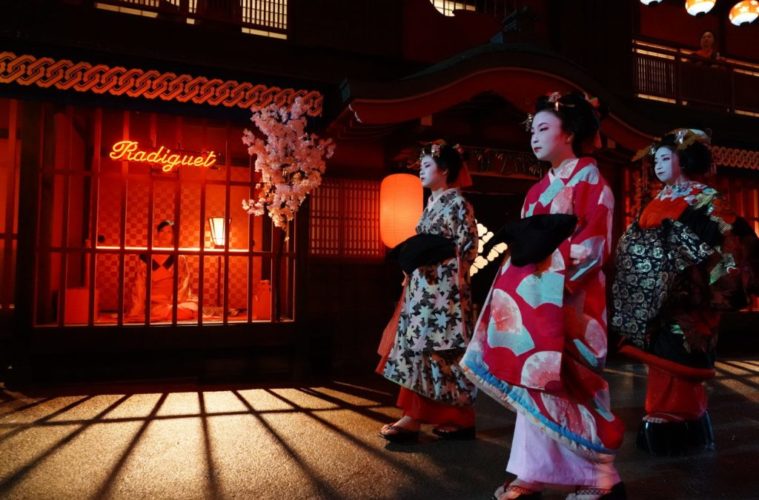This time last year, before COVID-19 turned the entertainment industry on its head, the Sundance Film Festival in Park City, Utah was pretty much snow-blanketed showbiz as usual – attracting hordes of movie stars, directors, executives, investors, publicists, journalists and film buffs for a week of screenings, skiing, snowboarding and non-stop soirees, not to mention step-and-repeat photo ops, gifting suites, branded activations, live concerts, panels and more. The 2020 fest went off without a hitch, taking place just before the full scope of the coronavirus was understood and led to cancellations by pretty much every other festival last year (including the similarly circus-like music meetup South By Southwest in Austin, Texas). Still, it wasn’t without a bit of reproach. Some media reported that the event might have in fact contributed to the pandemic’s spread, and many who attended reported feeling ill afterward. No definitive link was ever proven however, and COVID testing wasn’t even really available a year ago, anyway.
Though concepts like social distancing and flattening the curve became part of our vernacular last year, we all remained hopeful that things wouldn’t get as bad as feared, even as we adjusted to the challenges of the new normal. Big event organizers, however, did not have the luxury to wait and see. Like most large festival events, the Sundance Institute goes right into planning mode for the next year almost immediately after the event wraps up, and as the grim realities of the virus emerged, tough decisions had to be made.
“In early March, it was clear we would need at least several contingency plans,” Kim Yutani, Director of Programming tells L.A. Weekly. “Chief among those was the idea that the core of the Festival would be digital, which raised a slew of questions about access, especially for filmmaker teams looking to premiere at a festival – not be immediately available via streaming. So we had to pull together a structure to preserve the excitement and urgency and collective energy of a festival and then design the platform that would host that ambitious structure.”
This Thursday, the first ever digital version of the Sundance Film Festival will kick off online and while it remains to be seen how various components of this reimagined format will translate, there is, as always, a lot to be excited about in terms of line-up.

A GLITCH IN THE MATRIX by Rodney Ascher (Courtesy Sundance Institute/Rodney Ascher)
Ever since Robert Redford founded the event in 1978 to showcase emerging independent dramatic and documentary filmmakers, it’s been a go-to for big and small cinema premieres and competitions, with media exposure and awards consideration adding to its appeal. To that end, due to the Academy Awards getting pushed back to April 25, some of this year’s Sundance premieres will be eligible to compete for Oscars alongside films that debuted in 2020. There are some great titles from last year that went on to receive acclaim, too, including L.A. Weekly critics’ faves such as Minari, Never, Rarely, Always, Sometimes, The 40 Year Old Version and Promising Young Woman in the dramatic categories and The Social Dilemma, Crip Camp and Time in the documentary field.
“Submission numbers were on par with past years, and so too was submission quality,” Yutani – who lives in Los Angeles – says of the selection process. “We held our programming meetings over Zoom, which was new, but the conversations about curation and building a relevant and cutting edge program were the same.”
So how will this whole thing be structured and how will participants be able to engage so that it feels at least somewhat like the Sundance fans know and love?
“Ticket and pass-holders convene pre-screening in a live digital waiting room, much like a theatre lobby,” Yutani explains. “They’ll be able to see and interact with each other. Then, at the appointed time, the ‘house opens’ and the audience is automatically sent into the screening, which we’re using a player from industry standard Shift72 to play. The film will be preceded by the usual front matter, including a land acknowledgement and sponsor trailer, and one of our programmers will do a video introducing the director.”
Premieres will be followed by live Q&A’s and invites to check out Sundance’s “immersive celebration environment” on their New Frontier platform called Film Party. Here, viewers will be able to interact with each other via chat rooms and avatars.
“Seeing as how my film is all about the implications of being trapped in digital worlds, I shouldn’t be surprised that the film is going to premiere in one,” says filmmaker Rodney Ascher, whose doc A Glitch in the Matrix debuts in the Midnight section at Sundance and asks the question, “What if we are living in a simulation, and the world as we know it is not real?” Diving into this mind-melting idea through scientist’s, philosopher’s and conspiracy theorist’s lenses, the film explores not-so-unique concerns about life and reality that should make some waves this year, especially after the unreal 2020 we all lived through.
Another buzz-worthy debut delving into alternate reality is Prisoners of the Ghostland, acclaimed Japanese filmmaker Sion Sono’s English language debut starring Nicolas Cage, Nick Cassavetes and Bill Moseley. Back in 2018, Cage saw a turn in his career after his similarly psychedelic gore-fest Mandy premiered at Sundance, and this one is likely to cement his standing as the king of weird and wonderful on screen. It follows the mystical journey of his character, called only “Hero,” who tries to save a young woman trapped inside a supernatural underworld. Cage has called it the “wildest” and “most out there” film he’s ever made.
Moseley, who plays “The Governor,” who hires Cage to rescue his daughter from the wicked confines, tells L.A. Weekly that American audiences new to Sono’s work are in for a terror-filled treat with this one. With the crazed and committed performances of these two legends (Moseley is a horror icon, known for his work in Rob Zombie’s films and The Texas Chainsaw Massacre 2) we have to agree.
Like many who have the fortune to get their films into Sundance, the L.A.-based Moseley was excited to experience the fanfare of the festival before COVID made that impossible. “I’m a Sundance virgin,” he says. “And I’m a skier! But it made things a lot simpler. I’m mostly happy for people to see the movie and working with Nick was a lot of fun.”
With over half of the 2021 slate composed of new-to-Sundance directors and first-timers (aka “virgins”) there’s lots to discover. There’s also several familiar names behind the camera this time: Jerrod Carmichael, Robin Wright and Rebecca Hall all have films at the fest this year, and all are already garnering cinefile chatter.

SUMMER OF SOUL by Ahmir “Questlove” Thompson. (Courtesy of Sundance Institute | photo by Mass Distraction Media)
“I look forward to audiences experiencing the emotional ride of Sian Heder’s CODA or learning about the hidden histories in Questlove’s Summer of Soul and Julie Cohen and Betsy West’s My Name is Pauli Murray,” Yutani shares as some of her must-sees. “But every year I encourage audiences to take chances and explore the World Cinema offerings – we have incredible fiction films and documentaries from all parts of the world and we’re always so proud of that programming.”
There’s a diverse array of films that will be of special interest to L.A audiences in particular, as well. Yutani nods to the following: The Sparks Brothers, a sure to be kooky chronicle of the music careers of Ron and Russell Mael; Build Your Own Brigade, focusing on the California wildfires; Rita Moreno: Just A Girl Who Decided to Go For It, documenting the life of Latina legend and L.A.-based star of stage and screen; Zoe Lister-Jones and Daryl Wein’s How It Ends, featuring vignettes of a deserted Los Angeles on the eve of apocalypse; Rebel Hearts, exploring the legend of the trail-blazing Hollywood nuns who defiantly stood up to the patriarchy of the Catholic Church; and Weirdo Night, a film version and pilot of sorts celebrating Dynasty Handbag’s popular live show at Zebulon nightclub in Frogtown.
“It feels amazing to have this scrappy weird film in Sundance and it was a total surprise. They invited us!” shares Weirdo Night’s director Mariah Garnett, whose film seeks to create a live-feeling experience in the pandemic celebrating the spirit of the wacky variety show. “We wanted to make something that looked and sounded beautiful and that was worthy of the artists’ time. Normally performers want to make the rounds and do shows regularly for exposure, and Weirdo Night at Zebulon has a very dedicated and enthusiastic and supportive crowd that makes it worth a performer’s time.”
Adds Jibz Cameron (a.k.a. show star and host Dynasty Handbag, pictured in the film at the top of this story) about the exposure Sundance provides: “For a long time we have been fantasizing about making a filmed series and we think it would be such a good TV show. Like a noncompetitive Star Search for freaks, bringing back the aesthetics of the televised variety show that have kind of fallen by the wayside in recent years (replaced by competition shows). So we hope someone picks it up for that.”

REBEL HEARTS by Pedro Kos. (Courtesy of Sundance Institute/photo by Corita Art Center, Immaculate Heart Community, Los Angeles)
Getting “picked up” by distributors and streaming services is a big part of what makes scoring a Sundance selection stamp so significant. But even when that doesn’t happen, being seen by the industry crowd there can pay off down the road, as execs often remember direction, writing and performances that resonated with them. If these positive takes are solidified by blog and media coverage, all the better. Sundance can truly be the big break for filmmakers and actors alike when the stars align.
Rebel Hearts director Pedro Kos hopes that Sundance’s new online format might, in fact, lead to more of the above. “Acceptance into the U.S. Documentary Competition particularly was a wonderful validation that what we saw as truly special and unique in this story reverberated with others… especially Shawnee Isaac-Smith who began documenting these incredible women over 20 years ago,” Kos says. “And even though we wish we could have been in Park City to celebrate the premiere of the film, we are excited about the greater accessibility of Sundance 2021, where audiences all over the country will be able to watch the amazing films of the festival. We couldn’t have dreamed of a better launchpad for the film.”
Though the digital pivot has obviously created challenges for Sundance, Kos may be right to look on the bright side of this experimental online presentation. Journalists like myself who never had the budget to actually fly to and stay in Utah, will now have the opportunity to experience the event from the comfort of our homes. This is also true for film fans. In L.A., there were some Sundance-presented drive-in screenings planned initially, but they were canceled due to recent COVID spikes here. Other limited in-person satellite screening locations across the country and in Utah were still being determined case-by-case at the time of this writing.
Like Cannes, SXSW and Coachella, the party scene had become a huge component at Sundance, for better or worse. It will obviously play a smaller role this year as will the ubiquitous swag-driven and brand-driven “houses,” events and basically the entirety of the red carpet scene. Still, opportunities for marketing moments as well as promotion driven panels and discussions will be available.
For example, the new short film streaming platform, Argo (which streams high-quality short films to audiences online) will be promoting its content via a panel about the distribution of short films in the Village Festival section of the platform, presenting with partner XRM Media in the “XRM Media Lounge.” This will be complemented by a series of short film playlists on the platform, showcasing the best films to be featured at Sundance over the past couple of years.
“We’ve reimagined the ways we work with our partners and invented new ways to gather in both celebratory and ceremonial ways,” promises Yutani, highlighting Sundance’s “virtual Main Street” space online and the aforementioned Film Party online meet-ups.
Of course, virtual gatherings will never capture the energy, human connection or debauchery of an IRL festival, but when it comes to content, Sundance seems primed to come the closest we’ve seen so far. Movies will always be about escape after all, and Sundance is the place to see them first. The slopes and soirees can wait, but the stories on screen (whatever size it may be) thankfully won’t have to.
Set up an account via the festival’s official website, festival.sundance.org. Different viewing options are available including a $350 Festival Pass to watch everything from Jan. 28 to Feb. 3 or a Day Pass (choose your day) for $75. There is also an Explorer Pass for $25 which includes access to short films, the New Frontier Film Parties, Main Street features and Indie Series programs (included with a festival pass). Individual film screenings are $15 each. Each feature film has a premiere and dedicated three-hour time slot and these slots are limited so buy your tickets now. There will also be some select free online events. More info on the site.
Advertising disclosure: We may receive compensation for some of the links in our stories. Thank you for supporting Irvine Weekly and our advertisers.

